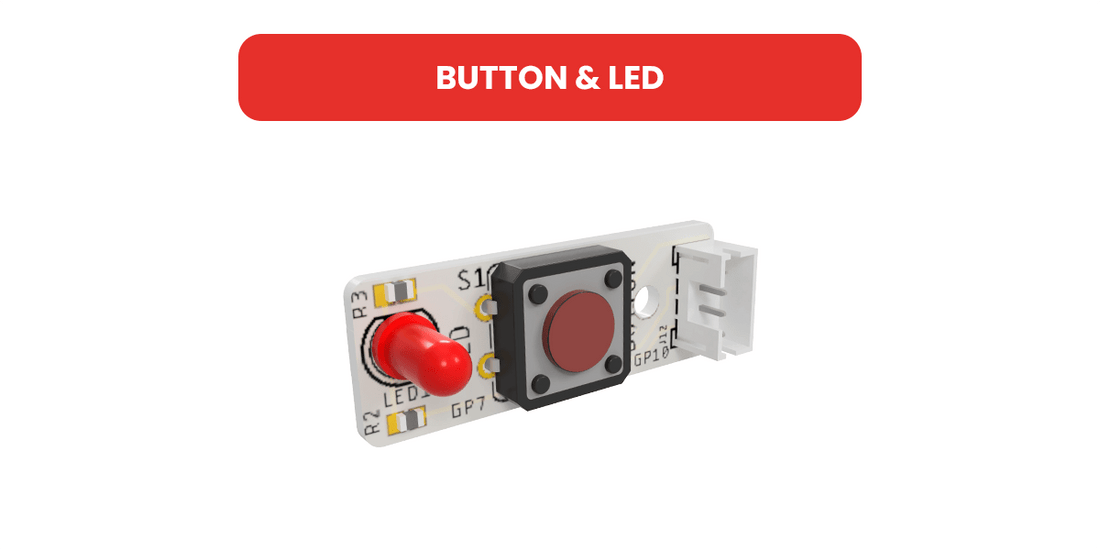What is Raspberry Pi Push Button?
The “button pi” module is a component that allows users to add a physical button to PicoBricks and assign customizable functions to this button. This module enhances PicoBricks by making it more interactive and customizable. Users can utilize this module to trigger specific actions or initiate a process when the button is pressed. This module enables users to make their PicoBricks projects more interactive and controllable, designed for various applications.
This module is used in various applications to add a physical button that can trigger customized functions. Here are some common scenarios where the module is employed:
Home Automation: This module finds use in home automation projects. For example, it can be used to turn lights on or off, control curtains, or ventilate a specific room with the press of it.
Here's a fun game to understand how the Raspberry Pi Button works
The versatility of this module makes it a fundamental component in various projects that require user interaction or control through a physical button.
What Do Red Led Lights Mean?
The red led lights meaning may vary depending on the context in which they are used. Here are a few common interpretations:
-
Power or Status Indicator: In many electronic devices, These lights are used as power indicators or status indicators. When a device is powered on or in standby mode, this LED might be lit to indicate that it’s operational or in a certain state.
-
Alert or Warning: These lights are often associated with alerts or warnings. In vehicles, for instance, a red warning light might indicate a problem like low oil pressure or high engine temperature. In industrial settings, red lights can be used to indicate alarms or emergency situations.
-
Recording or Active: In some cases, These lights signify that a device is actively recording or in use. For example, in cameras and camcorders, a red light might indicate that the device is recording video.
-
Infrared Illumination: Infrared (IR) LEDs emit light in the red part of the spectrum that is not visible to the human eye. These are often used in security cameras for night vision.
It’s important to note that the meaning of these LED lights can vary widely depending on the specific application and device in which they are used. Always refer to the user manual or documentation of the device to understand the precise meaning of red LED indicators in a particular context.
You can find detailed information about RGB LEDs or LDR sensors here.
FAQ
How to add a power button to Raspberry Pi?
To add a power button to a Raspberry Pi, connect a push button switch between a GPIO pin and ground. Then, configure the GPIO pin in the Pi's software to trigger a shutdown or startup command when the button is pressed.
How to connect arcade buttons to Raspberry Pi?
To connect arcade buttons to a Raspberry Pi, wire the buttons' terminals to the GPIO pins on the Raspberry Pi. One terminal connects to a GPIO pin and the other to a ground pin. Then, configure the GPIO pins in your software to respond to button presses.





